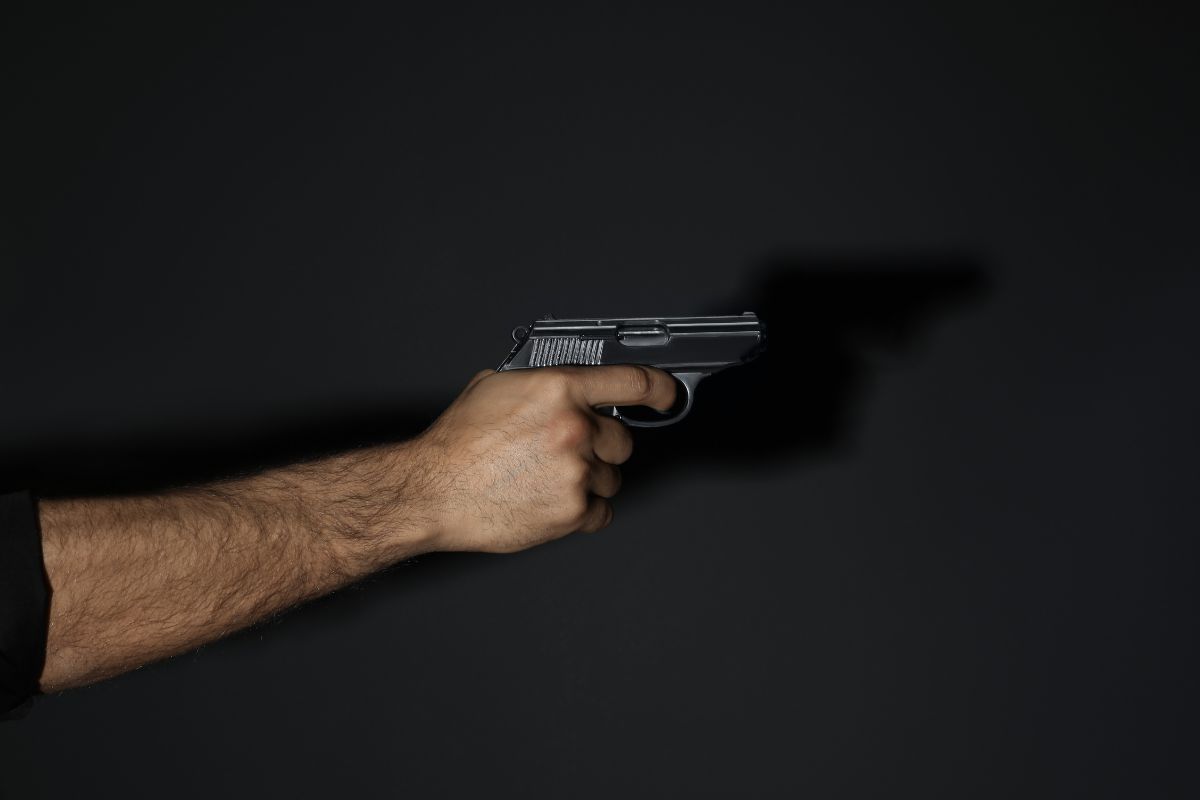What is a Pointing a Firearm charge?
The offence of pointing a firearm is covered under s.87 of the Criminal Code.
Offences relating to pointing a firearm are found in Part III of the Criminal Code relating to “Firearms and Other Weapons”. This section creates an offence for pointing a firearm at another person without lawful excuse. The offence is committed whether or not the firearm was loaded. If shots are actually fired, the separate offence of discharging a firearm may also apply.
Offences under s.87 of the Criminal Code are hybrid offences. This means that depending on the circumstances of your matter the Crown can elect to proceed either by indictment or summarily.
Examples
Some examples of pointing a firearm offence may include the following:
- Pointing a gun at someone’s head; and
- Pointing a firearm to scare someone;
Defences
Some defences against pointing a firearm offence may include the following:
- Identity;
- Essential elements of the offence are not met;
- No possession; and
- Any applicable Charter
Penalties
The following penalties may be applicable if you have been convicted of an offence under s.87 of the Criminal Code:
- Summary: up to two years in jail and/or a $5,000.00 fine.
- Indictable: up to five years in jail.
You may also have other dispositions available to you.
Overview of the Offence
Under s.87 of the Criminal Code:
(1) Every person commits an offence who, without lawful excuse, points a firearm at another person, whether the firearm is loaded or unloaded.
This means that in order for the Crown to convict you under s.87 of the Criminal Code they must prove, beyond a reasonable doubt, the actus reus, the mens rea and that you had possession of a firearm.
Actus Reus (The Guilty Act)
For an offence of pointing a firearm under s.87 of the Criminal Code, the actus reus the Crown must prove, beyond a reasonable doubt, is that:
- You pointed a firearm at another person; and
- You did so without lawful excuse.
It is important to note that it is not a defence if the firearm is unloaded. All the Crown is required to prove is that you pointed the firearm at another person and did so without lawful excuse. Id the Crown is able to prove this, without a reasonable doubt, the actus reus element of pointing a firearm contrary to s.87 of the Criminal Code is satisfied. However, it is important that the facts clearly indicate that the firearm was pointed directly, as opposed to waving it around, at another person (not an animal or object).
Mens Rea (The Guilty Mind)
For an offence of pointing a firearm under s.87 of the Criminal Code, the mens rea the Crown must prove, beyond a reasonable doubt, is that:
- You intended to point the firearms
The mens rea requirement for an offence of pointing a firearm, contrary to s.87 of the Criminal Code, is not a specific intent offence, rather it is a general intent offence. This means that the Crown does not have to prove that you intended to bring about the specific consequences, rather the mental element of the offence is satisfied by showcasing that you merely intended to point the firearm.
Possession
In addition to the actus reus and the mens rea, the Crown must also prove that you had possession of the firearm in question. This means that you must be aware that you had physical custody of the firearm and you must be aware that it was a firearm.
Pointing a Firearm Defences
A strong defence depends entirely on the specific circumstances of your case and the evidence against you.
However, some common defences to pointing a firearm offence charge may include the following:
- Identity
- Essential elements of the offence are not met;
- Lack of possession; and
- Any applicable Charter
Identity
The Crown needs to prove its identity beyond a reasonable doubt. This means that the Crown must prove that it was you who committed the offence. This can often be difficult if there are no witnesses if there were conditions present that prevented a witness from identifying you, or if the offence was captured by poor-quality surveillance footage. Sometimes mistakes do happen, the authorities could have made a mistake in identifying you as the perpetrator based on the poor quality of the footage. Your defence lawyer may be able to argue that the Crown cannot definitively prove that it was you who committed the offence, resulting in an acquittal.
Essential Elements Of The Offence Are Not Met
In order for the Crown to convict you of an offence, the actus reus and the mens reas of the offence need to be proven beyond a reasonable doubt. If the Crown is unable to do so, the essential elements of the offence are not satisfied and you cannot be convicted of the offence.
Lack Of Possession
Along with the actus reus and the mens rea for the offence of pointing a firearm, the Crown also needs to prove that you did in fact possess the firearm. As such, if you are able to showcase that you did not have a firearm in your possession, the Crown will not be able to convict you of an offence of pointing a firearm.
Applicable Charter defences
The Charter sets out you rights before and after arrest. In the event the police fail to abide by these rights, you may have an applicable Charter defence to your charge:
Common Charter breaches include:
- Section 8- Right to be secure from search and seizure;
- Section 9- Right not to be arbitrarily detained;
- Section 10- Right to be informed of reasons for detention or arrest:
- Section 11- General: legal rights apply to those “charged with an offence”
- Section 12- Cruel and unusual treatment or punishment
If any of your charter rights have been violated, you may be in a position to have any evidence obtained during the breach excluded.
Pointing a Firearm Punishments
Pointing a firearm is a hybrid offence which means that the Crown may proceed by indictment or summarily, depending on the circumstances of your case. The following penalties may be applicable:
s.87 – Summary
If you are convicted of pointing a firearm and the Crown elects to proceed summarily, you can face up to two years less a day in jail and/ or a $5,000.00 fine.
You also have the following dispositions available to you:
- Discharge
- Suspended sentence
- Fine alone
- Fina and probation
- Prison and probation
- Intermittent sentence;
- Fine, probation, and intermittent sentence; and
- Conditional sentence.
s.87 – Indictment
If you are convicted of pointing a firearm and the Crown elected to proceed by indictment, you can face up to five years in jail.
You will also have available to you a discharge, suspended sentence, stand-alone fine, custody, intermittent sentence, fine, probation and intermittent sentence.
You also have the following dispositions available to you:
- Discharge
- Suspended sentence
- Fine alone
- Fina and probation
- Prison and probation
- Intermittent sentence;
- Fine, probation, and intermittent sentence; and
- Conditional sentence.








